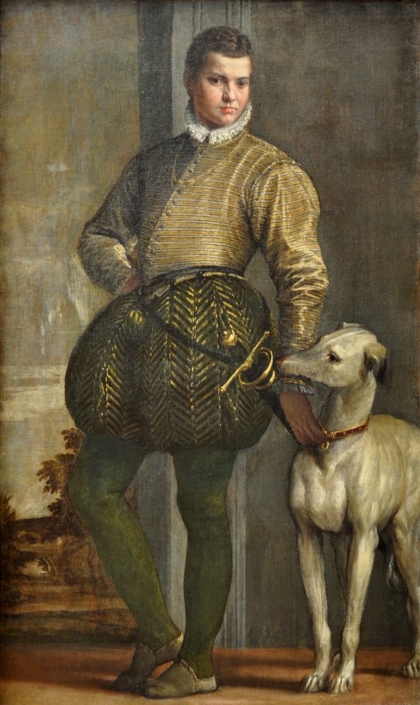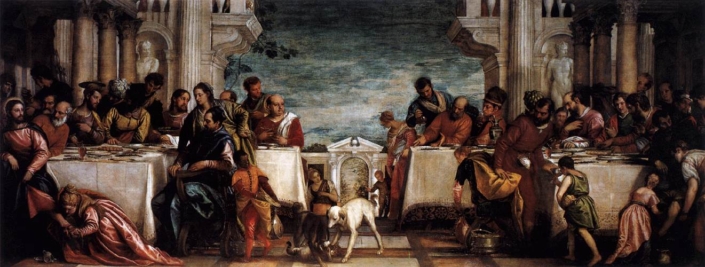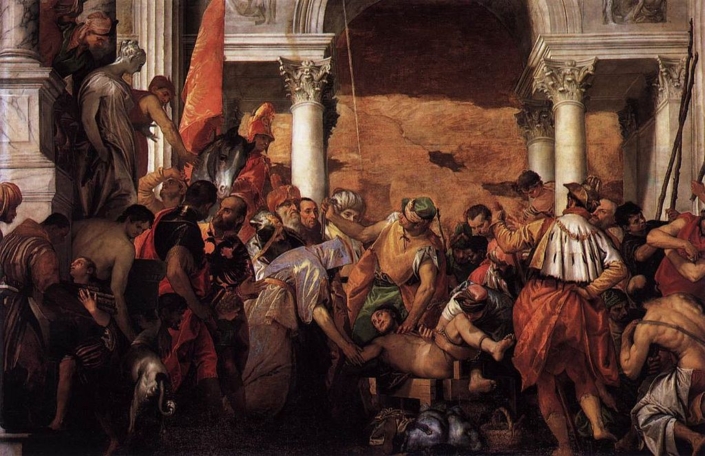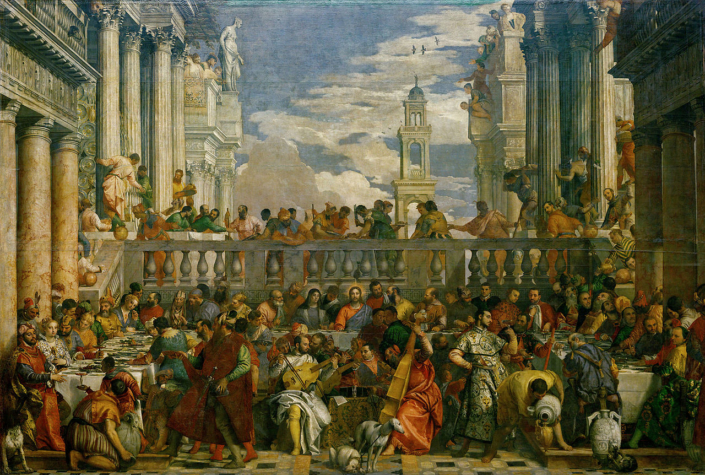Verona, 1528 – Venice, 19 April 1588
Painter during the Italian Reinassance.
He begins his training at Antonio Badile’s workshop, when he was 13, where he learned how to draw in a particular way for all of his life. In 1551 he moves to Venice for his first commission from the Church of Saint Francis of the Vigna.
There he creates the Pala Giustiniani and from 1553 he dedicates himself in decorating the ceilings of the Higher Council Hall of Ten, inside the Doge’s Palace, for whom he produces a series of mythological or allegorical panels, two of them are in the Louvre, in Paris.
He becomes one of the most famous painters of the Venetian School.
In 1555 he starts working at the frescos for the Sacristy and the Church of Saint Sebastian, which he will work on for about fifteen years.
During the start of the 1560 he works on a cycle of frescos that decorates Villa Barbaro in Maser, built by the famous architect Palladio.
In 1566 he paints in Verona the altarpiece of the high altar of Saint George in Braida, The Martyrdom of Saint George, and for the same church, Saint Barnabas Healing the Sick.
He is summoned by the Tribunal of the Inquisition for some bizarre details in his Last Supper (The Feast in the House of Levi), commissioned to him in 1573. This does not intimidate him, but increases his production: Mystical Marriage of St. Catherine (1575) and The Triumph of Venice.
He dies in 19 April 1588 in Venice.
The painting Boy with a Greyhound, possibly made in 1570, could represent a young boy from the Colleoni family in Bergamo. It is now in The Metropolitan Museum of Art in New York.











 © Simkó Szilárd
© Simkó Szilárd